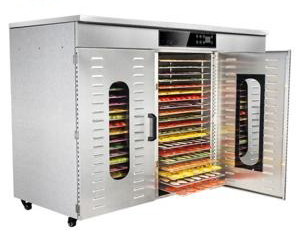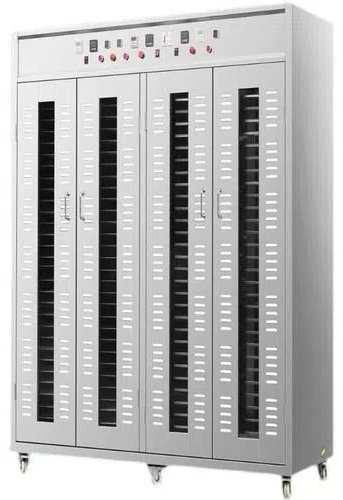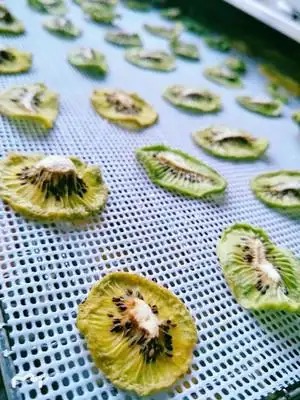
Content Menu
● What Is a Heat Pump Dryer?
>> How Heat Pump Dryers Work
● Advantages of Heat Pump Dryers
>> 1. Energy Efficiency
>> 2. Gentle on Fabrics
>> 3. Versatile Installation Options
>> 4. Cost Savings Over Time
>> 5. Smart Features
● How to Choose the Best Heat Pump Dryer
>> 1. Capacity
>> 2. Energy Rating
>> 3. Additional Features
>> 4. Noise Level
>> 5. Warranty and Support
● Maintenance Tips for Heat Pump Dryers
● Common Misconceptions About Heat Pump Dryers
>> 1. They Take Longer to Dry Clothes
>> 2. They Are Too Expensive
>> 3. They Are Complicated to Use
● Environmental Impact of Heat Pump Dryers
● Conclusion
● Related Questions
>> 1. What are the key benefits of using a heat pump dryer?
>> 2. How do I maintain my heat pump dryer?
>> 3. Are heat pump dryers suitable for all fabric types?
>> 4. How much can I save on energy bills with a heat pump dryer?
>> 5. Can I install a heat pump dryer anywhere in my home?
Heat pump dryers have revolutionized the way we think about drying clothes. These innovative appliances are not only energy-efficient but also gentle on fabrics, making them an excellent choice for modern households. In this article, we will explore the features, benefits, and considerations of heat pump dryers, helping you determine which heat pump dryer is best for your needs.

What Is a Heat Pump Dryer?
A heat pump dryer operates on a closed-loop system that uses a refrigerant to recycle air. Unlike traditional dryers that vent hot, moist air outside, heat pump dryers extract moisture from the air and reuse the heated air, resulting in significant energy savings. This method allows them to dry clothes at lower temperatures, which is gentler on fabrics.
How Heat Pump Dryers Work
The operation of a heat pump dryer can be broken down into several key stages:
1. Air Intake: The dryer draws in ambient air from the surrounding environment.
2. Heating the Air: The air passes over a heat exchanger where it is heated using a compressor and refrigerant.
3. Drying Process: The warm air is circulated into the drum where it absorbs moisture from the wet clothes.
4. Condensation: The moist air is then passed back through another heat exchanger, where it cools down, causing the moisture to condense into water.
5. Water Collection: The condensed water is either drained away or collected in a reservoir for manual emptying.
6. Recycling Air: The now-dry air is reheated and returned to the drum to continue the drying process.
This efficient cycle minimizes energy consumption while maximizing drying effectiveness.
Advantages of Heat Pump Dryers
1. Energy Efficiency
Heat pump dryers are known for their exceptional energy efficiency. They can reduce energy consumption by up to 50% compared to conventional dryers, making them an eco-friendly choice. By using a heat pump system, these dryers recycle warm air instead of releasing it outside.
2. Gentle on Fabrics
Because they operate at lower temperatures, heat pump dryers are less likely to shrink or damage delicate fabrics. This feature is particularly beneficial for items like wool and silk that require special care.
3. Versatile Installation Options
Heat pump dryers do not require external venting, allowing for flexible installation in various locations within your home. Whether you have a small laundry room or a compact apartment, you can place a heat pump dryer almost anywhere with access to electricity and water.
4. Cost Savings Over Time
While the initial purchase price of a heat pump dryer may be higher than traditional models, the long-term savings on energy bills can make them more cost-effective in the long run. Many users report breaking even within a few years due to reduced electricity costs.
5. Smart Features
Many modern heat pump dryers come equipped with advanced features such as moisture sensors, which automatically adjust drying times based on the moisture level in your clothes. This not only saves energy but also prevents over-drying.

How to Choose the Best Heat Pump Dryer
When selecting a heat pump dryer, consider the following factors:
1. Capacity
Choose a model that suits your household's laundry needs. Larger families may require dryers with bigger drum capacities to handle larger loads efficiently.
2. Energy Rating
Look for models with high energy-efficiency ratings (such as ENERGY STAR certified) to maximize your savings.
3. Additional Features
Consider extra features like steam cycles for wrinkle reduction or specialized drying programs for different fabric types.
4. Noise Level
If you're sensitive to noise or plan to install your dryer near living spaces, check the decibel rating of potential models. Many manufacturers now offer quieter models designed for residential use.
5. Warranty and Support
Evaluate the warranty offered by manufacturers and their customer support services. A longer warranty often indicates confidence in product quality and durability.
Maintenance Tips for Heat Pump Dryers
To ensure optimal performance and longevity of your heat pump dryer, follow these maintenance tips:
- Regularly clean the lint filter: This prevents airflow blockage and enhances efficiency.
- Empty the water reservoir: If your model does not have direct drainage, remember to empty the water tank after each use.
- Check and clean the condenser: Some models have self-cleaning condensers, but others may require manual cleaning.
- Inspect hoses and connections: Regularly check hoses for leaks or damage to prevent any potential issues.
- Schedule professional servicing: Consider having your unit professionally serviced every couple of years to maintain efficiency and performance.
Common Misconceptions About Heat Pump Dryers
Despite their many advantages, there are several misconceptions about heat pump dryers that can deter potential buyers:
1. They Take Longer to Dry Clothes
While it's true that heat pump dryers may take longer than traditional vented models due to their lower operating temperatures, they are generally more efficient because they use less energy during this process.
2. They Are Too Expensive
The initial cost of a heat pump dryer can be higher than traditional models; however, considering their energy savings over time makes them more affordable in the long run.
3. They Are Complicated to Use
Most modern heat pump dryers come with user-friendly interfaces and clear instructions, making them easy to operate even for those unfamiliar with advanced appliances.
Environmental Impact of Heat Pump Dryers
As consumers become more environmentally conscious, choosing appliances with lower carbon footprints has become increasingly important. Heat pump dryers contribute positively in several ways:
- Lower Energy Consumption: By using less electricity than traditional dryers, they help reduce greenhouse gas emissions associated with power generation.
- Sustainable Practices: Many manufacturers are adopting eco-friendly materials and practices in their production processes.
- Longevity: With proper maintenance, heat pump dryers can last longer than traditional models, reducing waste associated with appliance disposal.
Conclusion
Heat pump dryers represent a significant advancement in laundry technology, offering energy efficiency and gentle fabric care. While they may have a higher upfront cost compared to traditional dryers, their long-term savings and environmental benefits make them an excellent investment for any household.
In summary, when considering which heat pump dryer is best for you, evaluate your laundry needs, budget, and desired features. With numerous models available on the market today, there is sure to be a heat pump dryer that meets your requirements.

Related Questions
1. What are the key benefits of using a heat pump dryer?
Heat pump dryers offer energy efficiency, gentle fabric care, versatile installation options, cost savings over time, and smart features that optimize drying performance.
2. How do I maintain my heat pump dryer?
Regularly clean the lint filter, empty the water reservoir if applicable, check the condenser for cleanliness, inspect hoses for leaks or damage, and consider professional servicing every couple of years.
3. Are heat pump dryers suitable for all fabric types?
Yes, heat pump dryers are designed to handle various fabric types gently due to their lower drying temperatures.
4. How much can I save on energy bills with a heat pump dryer?
Users can save up to 50% on energy costs compared to traditional dryers, leading to significant savings over time.
5. Can I install a heat pump dryer anywhere in my home?
Yes, since they do not require external venting, heat pump dryers can be installed in various locations with access to electricity and water.












